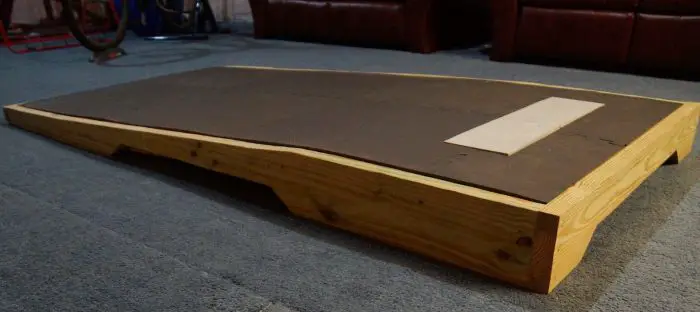In a game of baseball, the pitching mound is one of the most important parts of a baseball field.
For this reason, it goes without saying that constructing one properly is paramount to playing a good game of baseball. In this guide, you will find out how to build a pitching mound, either in your own back yard, at a school field, or on a baseball field.
What is a pitching mound made from?
A pitching mound is typically made from a high clay content building soil. There is also a type of specially designed packing clay that is used for the landing and table areas of the pitching mound.
This specially designed packing clay is designed to provide a more solid footing for the pitcher, and also for longer wear through all of the baseball games that the pitching mound will be needed.
What tools and other things will I need to build a pitching mound?
There is a healthy sized list of things that you will need to build a pitching mound, here we have put together the basics of what you will need to get yourself started on this new project.
- A shovel or spade: you will need this to dig out an area that your specially designed clay soil will go.
- A carpenter’s level and square: these will help you to make sure that the ground you have dug out is level enough for the clay soil to be built up.
- A large nail or spike.
- A mound slope board: this is to maintain the shape of the pitching mound.
- A ten foot 2” by 4” piece of wood.
- A four foot 1” by 4” piece of wood.
- A wheelbarrow: for ease of transporting the clay soil to the mound area and transporting unused soil away from the pitching mound area.
- Specialty packing clay: this is the obvious one. A pitching mound needs to be constructed with this specialty packing clay in order to be useful as a baseball pitching mound.
- Vibrating asphalt compactor.
- 100-foot tape measure: again, this is an obvious one. If you want an even and well-made pitching mound, then this is essential.
- Mound building clay: this goes alongside the specialty packing clay in that it is essential for a good quality baseball pitching mound.
- Four-sided rubber.
- Rake.
- String.

Are all of these essential?
If you want to create a good quality pitching mound, most of the items on this list will be essential. You will see why each piece is useful when the step by step guide is explored.
But essentially, if you want to create something that will last through multiple games, this list of tools and items is what you should follow.
How do I make the pitching mound then?
Here is the step by step guide. Now that you know all of the tools that are required to build a pitching mound, you will want to know how to actually construct one…
Step 1: measurements
This step involves obtaining the correct distance, height and alignment. If we are talking about a high school baseball field, the pitcher’s mound will have a rubber plate that measures 60’ and 6” from the apex of the home plate. The top of the rubber will be 10” higher than the home plate.
Other specifications include that the rubber is 24” long. You can get the center of this rubber and measure 60’ 6” from this mark and place the spike into the ground. Use your carpenter’s level to check that the rubber is 10” higher than home plate.
Step 2: constructing the collar
Measuring 18” from the front the pitcher’s rubber will give you the center of the mound. Place another spike her as a marker. If you then attach a piece of string to this spike and measure 9’ from the spike, you can move the string around in a circle and mark the outline of the mound.
Take your spade or shover and dig out this marked area.
Step 3: building the pitcher’s plateau
Since the pitcher’s mound is exactly that, a mound, it is not perfectly flat. But there should not be a pointed peak, instead there should be a level plateau at the top.
Since the rubber is 10” higher than the home plate, the plateau should be level with the rubber and span an area of 5’ by 3’. In order to achieve this, you will need to place the plateau frame on the pitcher’s mound. This needs to be placed at exactly 6” from the front rubber, 24” from the back rubber, and then 18” from each side.
Once you have found the perfect spot for the pitcher’s plateau to sit, you can mark it, dig out the area and replace the plateau frame with the specialty clay. You can disturb the soil around the hole you have dug so that the clay will have something to adhere to as well.
Once you’ve added the frame back in, you can add the clay. Usually you will need to add the clay in layers so that it has a chance to adhere to the soil and set in place before adding the next layer. In order to tamp the plateau, you cannot be too careless as this could affect the position of the rubber. You can then remove the plateau frame and rake a layer of infield mix over the layer of clay. This improves traction.
Step 4: constructing the mound slope
This is an essential part of the pitcher’s mound because a player will need a flat plateau area to safely play. If you use a large spike to outline a landing area, you will start at the front corners of the plateau and then continue out to the turf. You can loosen the soil that is already there so that the building soil will stick to it.
Place the four-foot piece of wood on top of the rubber and then extend it to the edge on the right of the plateau. Then place the ten-foot piece of wood along the outline of the landing area.
You can then spread the materials along this board, then use a sawing motion with the board as you move it clockwise to the other side of the landing area. The material should reach the bottom of the board all the way round. You can then tamp this area to make it firmer.
